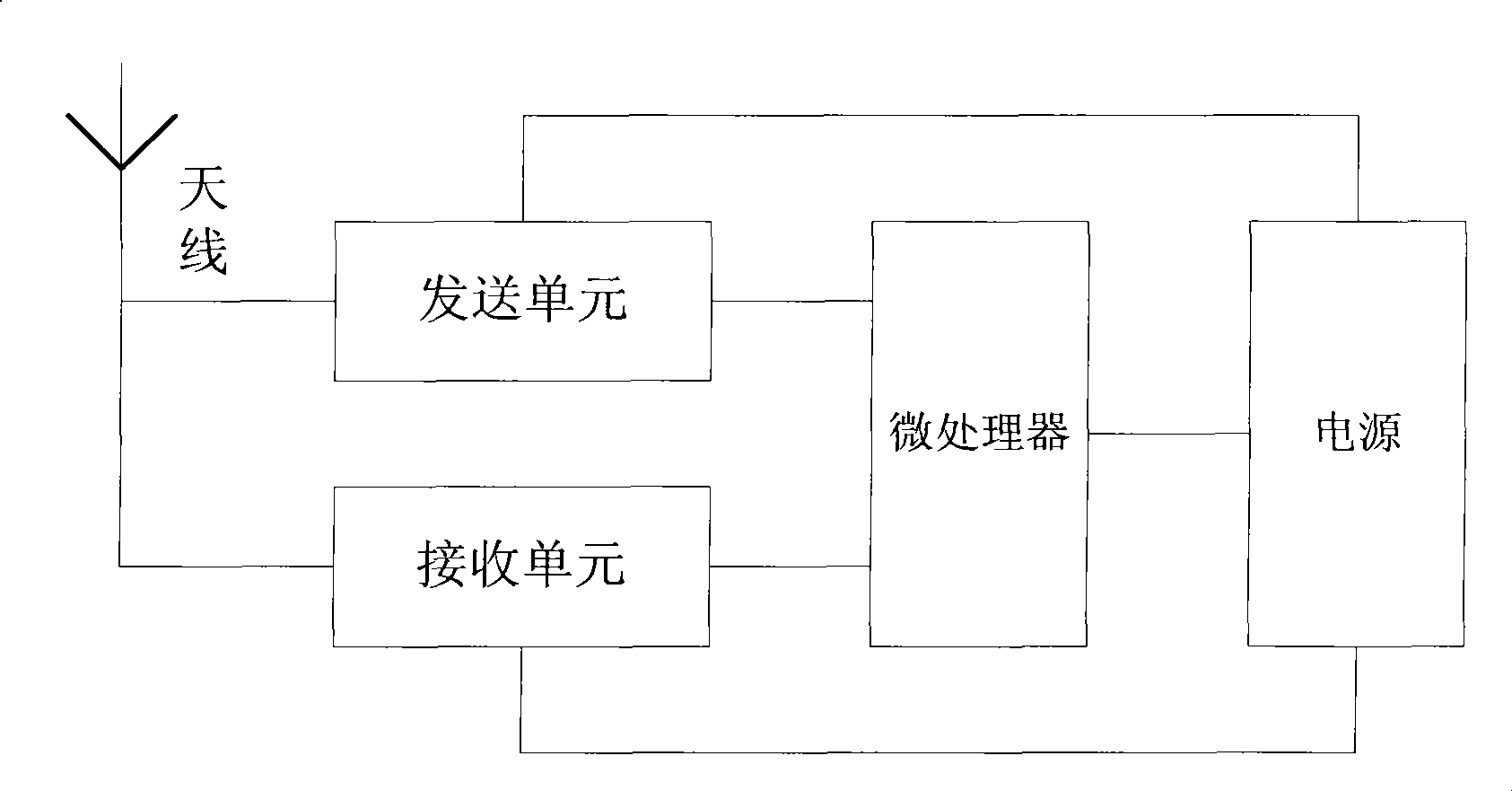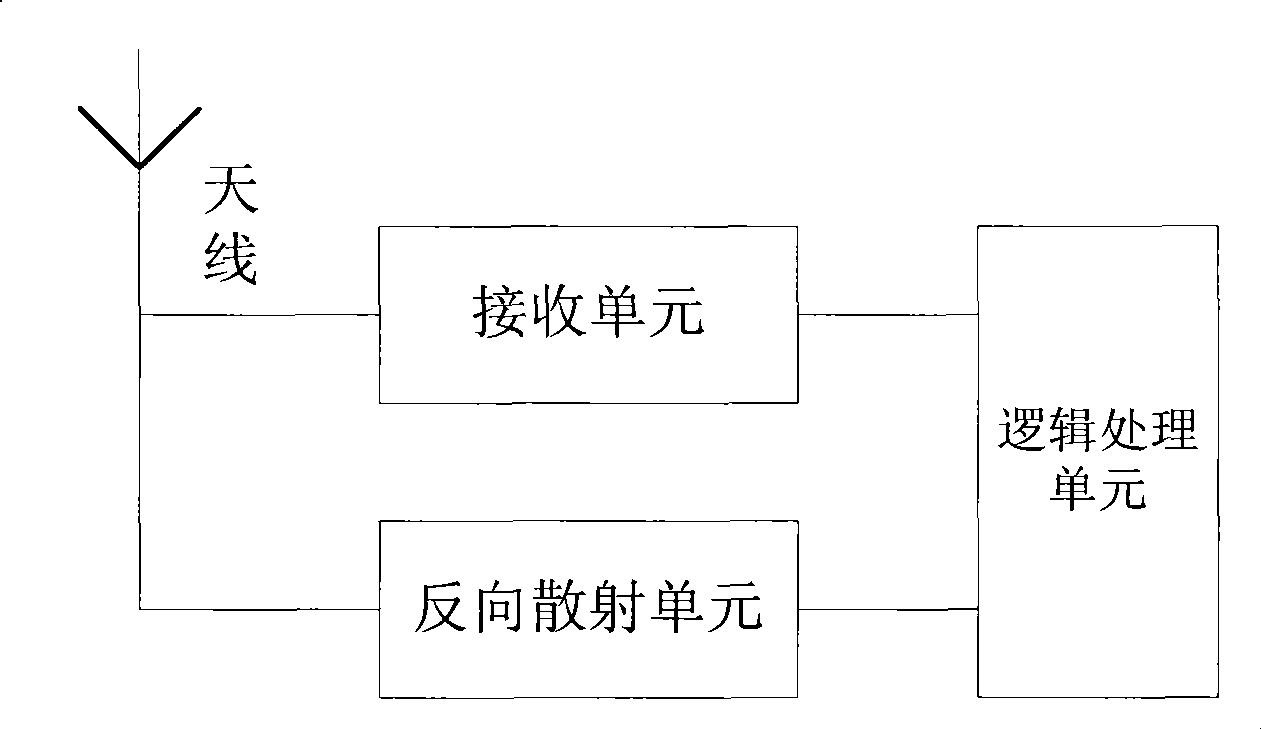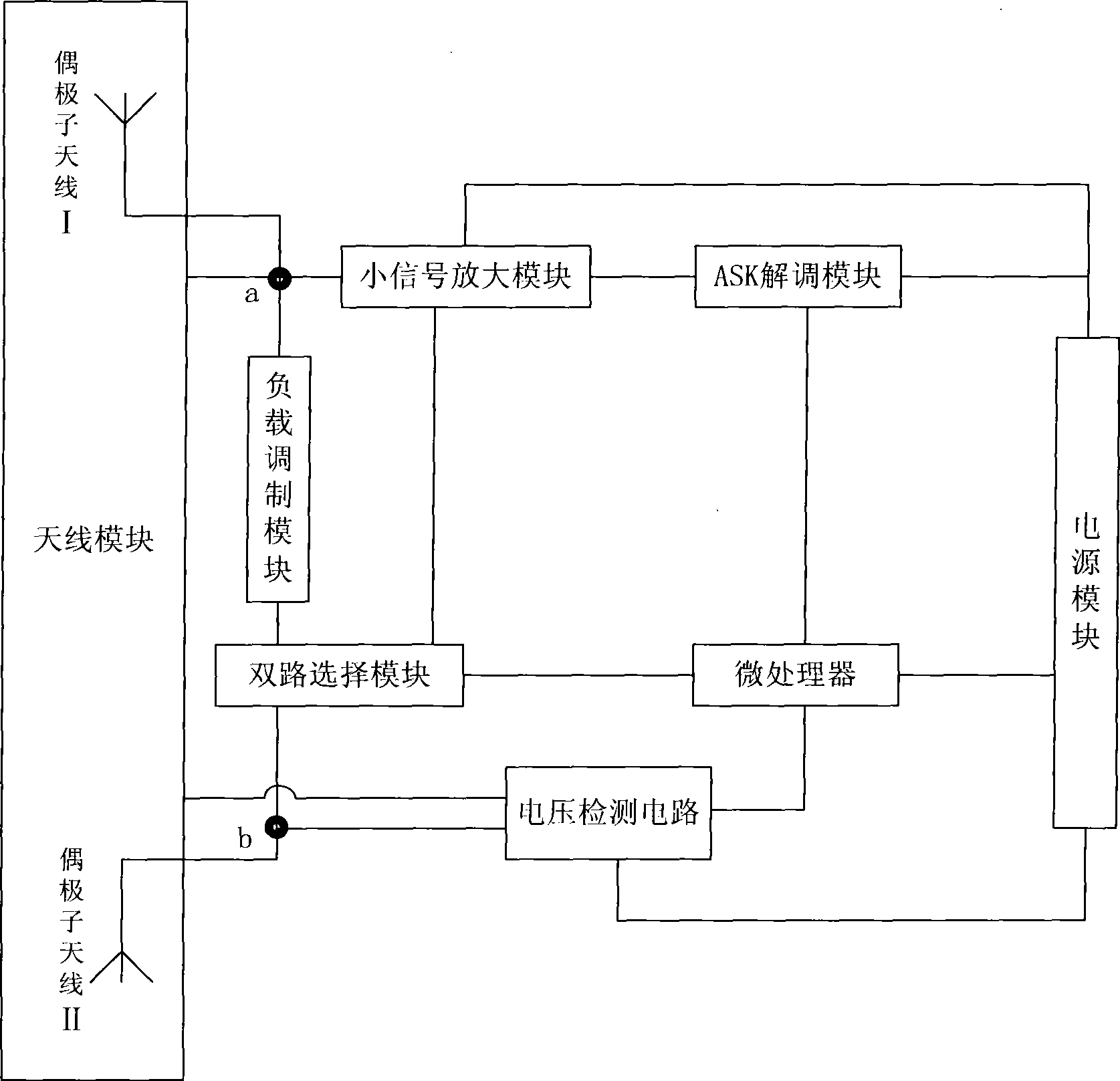2.45 GHz semi-active radio frequency identification label and signal processing method thereof
A radio frequency identification tag, radio frequency signal technology, applied in the field of 2.45GHz semi-active radio frequency identification tag and its signal processing, can solve the problems of poor data processing capability, short reading distance of received radio frequency signals, etc., and achieve the effect of reducing power consumption
- Summary
- Abstract
- Description
- Claims
- Application Information
AI Technical Summary
Problems solved by technology
Method used
Image
Examples
Embodiment 1
[0034] Such as image 3As shown, the 2.45GHz semi-active radio frequency identification tag of the present invention includes a microprocessor (MCU), an ASK demodulation module, a small signal amplification module, a dual-way selection module, a load modulation module, a voltage detection circuit, a power supply module, and an antenna module. The antenna module includes a dipole antenna I and a dipole antenna II. The small signal amplification module is connected with the ASK demodulation module to form an antenna signal receiving unit, the dual-way selection module is connected with the load modulation module to form a tag signal transmission unit, and the micro-processing module is respectively connected with the ASK demodulation module, the dual-channel selection module, The voltage detection circuit is connected, and at the same time, the antenna feed point a of the dipole antenna I is connected to the load modulation module, the small signal amplification module, and the ...
PUM
 Login to View More
Login to View More Abstract
Description
Claims
Application Information
 Login to View More
Login to View More - R&D Engineer
- R&D Manager
- IP Professional
- Industry Leading Data Capabilities
- Powerful AI technology
- Patent DNA Extraction
Browse by: Latest US Patents, China's latest patents, Technical Efficacy Thesaurus, Application Domain, Technology Topic, Popular Technical Reports.
© 2024 PatSnap. All rights reserved.Legal|Privacy policy|Modern Slavery Act Transparency Statement|Sitemap|About US| Contact US: help@patsnap.com










